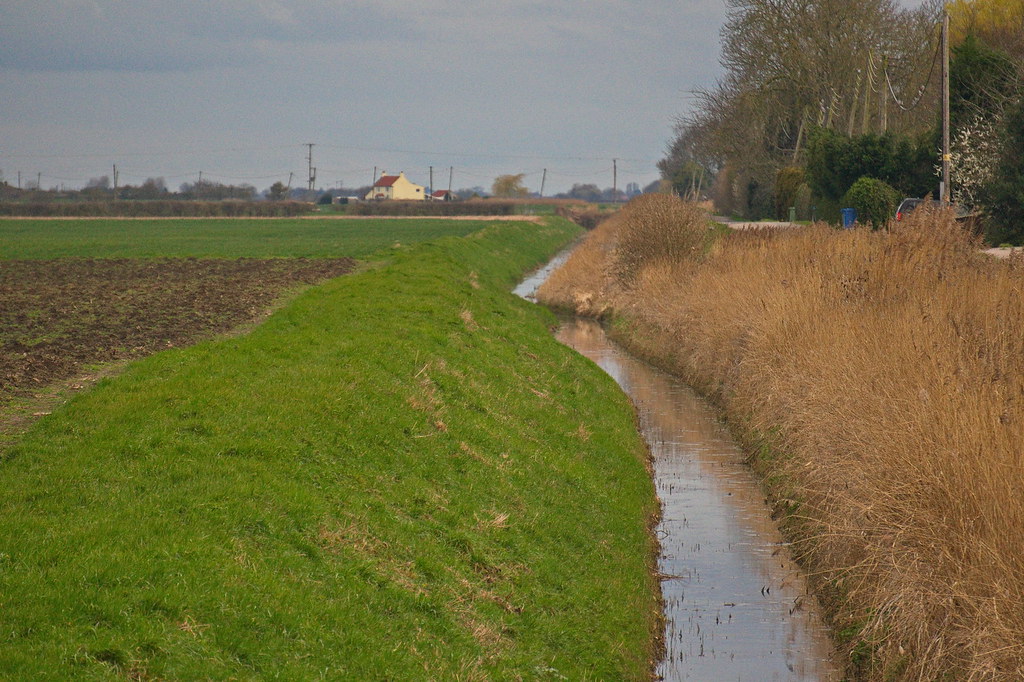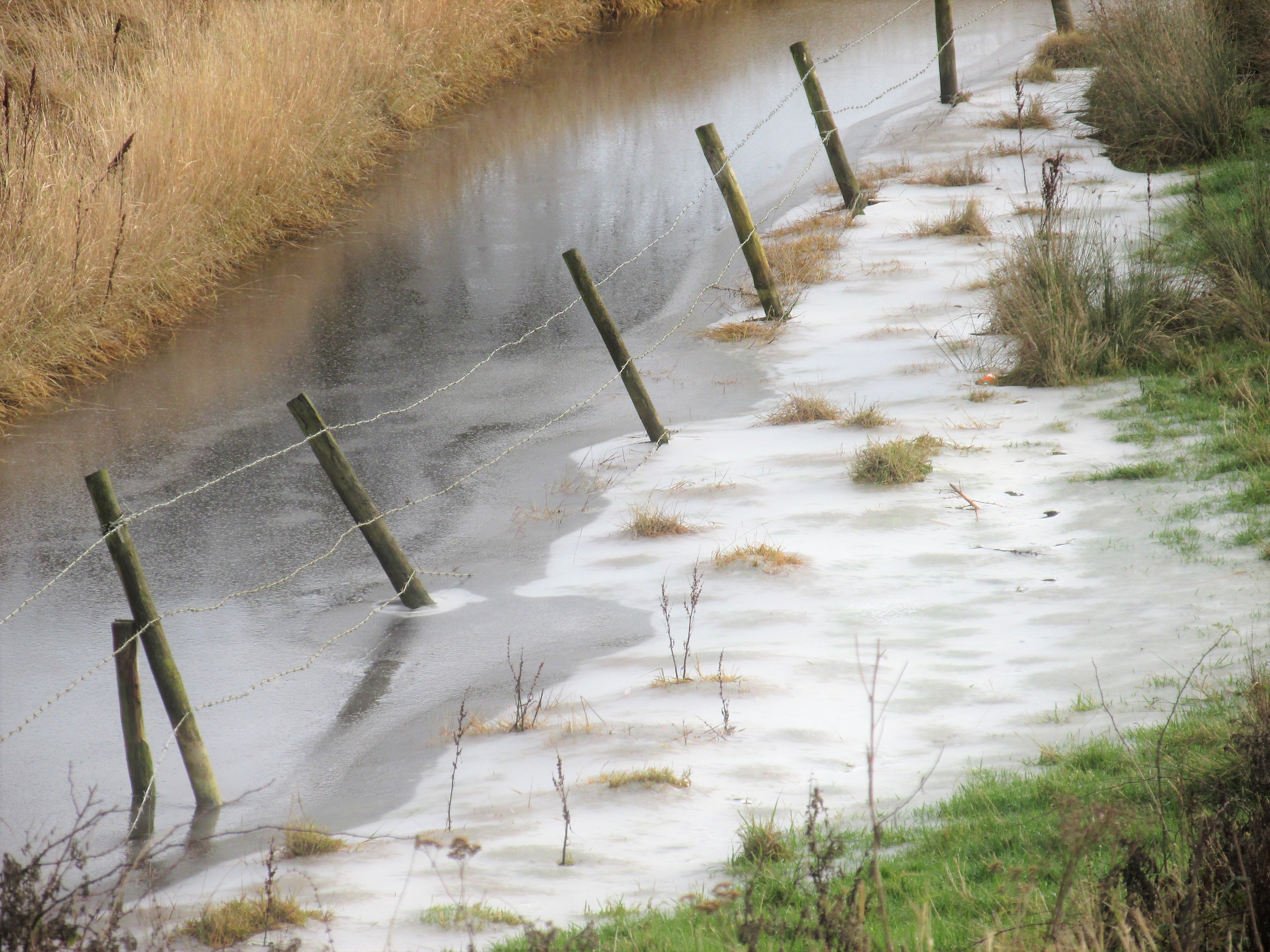In a constant dance between land and water, a remarkable battle has been waged for centuries to safeguard the low-lying lands against the relentless power of the sea. Welcome to a world where nature’s push and humanity’s resilience converge, where colossal dikes rise from the depths, and Delta Works stand as an emblem of mankind’s unwavering determination to preserve what is rightfully theirs. In this article, we embark on a journey through the fascinating history and ingenious engineering that have shaped the dikes and Delta Works of the Netherlands, a testament to humanity’s unyielding quest to tame the waters and forge a future in harmony with nature. Join us as we explore the complex web of canals, polders, and hidden tales of triumph against the elements, where the ingenuity of man merges with the power of the sea.
– Mastering the Elements: The Ingenious Design of Dikes and Delta Works
Mastering the Elements: The Ingenious Design of Dikes and Delta Works
Venture into the realm of architectural magnificence and witness the awe-inspiring mastery over nature’s elements – the ingenious design of dikes and delta works. These monumental structures are the epitome of human resilience and brilliance, providing both protection and a testament to mankind’s ability to conquer even the most challenging of landscapes.
In a world where the forces of water constantly threaten to reshape the land, dikes stand tall as guardians of stability. These massive embankments, skillfully crafted, harness the power of water, channeling its flow and ensuring the safety of surrounding areas. Thoughtfully engineered, dikes are created using a meticulous blend of materials, ranging from compacted earth to reinforced concrete, designed to withstand the relentless force of turbulent waters. As these guardians stand firm against the ripples and surges, they serve as silent reminders of our unwavering spirit in the face of adversity.
- Imposing and stalwart, dikes protect coastal towns and cities from flooding, averting potential disasters.
- Through their strategic placement, dikes also safeguard vast areas of fertile land, preventing degradation due to constant erosion.
- These engineering marvels blend seamlessly with the surrounding landscape, harmonizing human interventions with the beauty of nature.
- The skills of hydrologists, geotechnical engineers, and architects converge to create dikes that shape the very future of our landscape.
But it is the delta works that truly elevate our admiration to new heights. These colossal infrastructure projects are designed to tame the wild and capricious forces of rivers, estuaries, and the relentless ocean. By carefully managing the ebb and flow of water, delta works protect vulnerable regions from flooding while simultaneously reclaiming new, habitable land from the depths.
From mammoth sea barriers that majestically arise to fend off the fury of tempestuous tides, to intricate sluices and channels that navigate the intricate dance between land and sea, the delta works represent a poetic symphony between humanity and nature. Each component masterfully constructed, every technique employed a testament to our ingenuity in harmonizing the contrasting forces that shape our planet.

– Environmental Impacts and Sustainable Solutions for Land Preservation
Environmental Impacts and Sustainable Solutions for Land Preservation
As cities expand and landscapes transform, the environmental impacts on land often go unnoticed. However, it’s crucial to understand the consequences of these changes and the importance of preserving our land for future generations. One of the biggest environmental impacts is deforestation, which leads to biodiversity loss, soil erosion, and climate change. Clearing land for agriculture, logging, or urban development disrupts delicate ecosystems, destroys habitats, and disrupts the balance of various species. To address this, sustainable solutions must be implemented to ensure land preservation without compromising essential needs.
Here are a few sustainable solutions:
- The promotion of agroforestry techniques, such as integrating trees and crops, can optimize land use and minimize deforestation. By diversifying planting systems, we enhance biodiversity, restore degraded soils, and sequester carbon, all while maintaining agricultural productivity.
- Implementing strict zoning regulations can protect environmentally sensitive areas and prevent encroachment into ecologically significant regions. By designating protected areas, such as national parks and nature reserves, we safeguard unique ecosystems and ensure wildlife conservation.
- Encouraging urban planning practices that prioritize green spaces, parks, and sustainable infrastructure can help mitigate urban sprawl and preserve natural landscapes. By incorporating green roofs, vertical gardens, and urban forests, cities can enhance biodiversity, reduce heat island effect, and improve the overall well-being of their inhabitants.
These sustainable solutions not only contribute to land preservation but also foster a harmonious relationship between human activities and the environment. By implementing these actions at local, regional, and global levels, we can work towards a future where land preservation and human development coexist, ensuring a sustainable and thriving planet for generations to come.

– Harnessing Innovation: Recommendations for Enhancing Dike and Delta Systems
Overview
In order to enhance dike and delta systems and harness innovation, several key recommendations can be implemented. These recommendations focus on improving the effectiveness, sustainability, and adaptability of these systems to mitigate the risks associated with flooding and coastal erosion. By embracing cutting-edge technologies, holistic approaches, and community engagement, we can create resilient and robust dike and delta systems that protect both human populations and the environment.
Recommendations
- Invest in Smart Infrastructure: Embrace the use of advanced sensors, data analytics, and artificial intelligence to monitor dike and delta systems in real-time. This will enable early detection of potential failures or breaches and allow for prompt emergency responses.
- Adopt Nature-Based Solutions: Promote the use of nature-based solutions, such as wetland restoration and vegetation planting, to enhance the natural resilience of dikes and deltas. These solutions can reduce wave energy, stabilize soil, and provide habitat for diverse ecosystems.
- Ensure Sustainable Maintenance: Develop long-term maintenance strategies that prioritize regular inspections, repairs, and upgrades of dike and delta systems. This will help prevent costly and catastrophic failures while extending the lifespan of these critical structures.
- Facilitate Cross-Sector Collaboration: Foster collaboration among government agencies, scientific institutions, private enterprises, and local communities. By sharing knowledge, expertise, and resources, we can develop innovative and integrated solutions that address the multifaceted challenges facing dike and delta systems.
- Engage Local Communities: Involve local communities in decision-making processes regarding dike and delta systems. Promote awareness, education, and participation to ensure that the needs, perspectives, and traditional knowledge of these communities are considered in implementing effective measures.
By implementing these recommendations, we can harness innovation to enhance dike and delta systems, minimize risks, and build a more resilient future for coastal regions. Let’s embrace progress and work together to safeguard our communities and ecosystems against the threats posed by flooding and erosion.

– A Balancing Act: Striking a Sustainable Coexistence between Human Intervention and Nature
A Balancing Act: Striking a Sustainable Coexistence between Human Intervention and Nature
As inhabitants of this planet, humans have long played a crucial role in shaping their environment. However, finding the delicate balance between human intervention and the preservation of nature is an ongoing challenge that requires thoughtful consideration and action. It is imperative that we recognize the interconnectedness of human and natural systems, and seek sustainable solutions that promote coexistence for the benefit of both.
Key factors to facilitate a harmonious relationship between human intervention and nature are:
- Conservation: By actively conserving natural habitats, we can minimize our negative impact on the environment. This includes protecting endangered species, restoring ecosystems, and implementing sustainable land management practices.
- Innovation: Embracing innovative technologies and practices can help us achieve a sustainable future. From renewable energy sources to eco-friendly agriculture techniques, we have the power to develop solutions that minimize our ecological footprint while improving our quality of life.
- Educational Awareness: Enhancing public awareness and understanding of the intricate relationship between human intervention and nature is essential. By fostering environmental education and promoting responsible behaviors, we can empower individuals to make informed decisions and actively participate in the preservation of our planet.
Concluding Remarks
As the sun begins to set over the picturesque landscape of the Netherlands, one can’t help but marvel at the triumph of human endeavor over the relentless powers of nature. The dikes, resembling steadfast guardians, stand tall, silently reminding us of the battles fought and won against the waters that once threatened to reclaim this land.
The story of dikes and Delta Works is nothing short of awe-inspiring. It is a tale that speaks of resilience, ingenuity, and unwavering determination to protect the precious treasure that is the Dutch land. It is a testament to the indomitable human spirit and our ability to shape our environment for the better.
Throughout history, the Dutch have mastered the art of taming the unruly waters, transforming vast swaths of inundated terrain into fertile lands that flourish with life. The Delta Works, a marvel of engineering brilliance, embody the quintessential Dutch spirit – combining form and function to create a symbiotic relationship between man and nature.
As we bid farewell to this exploration into the world of dikes and Delta Works, one cannot help but feel a deep sense of admiration for the brilliance of these structures. Beyond their practical purpose, they have become iconic symbols of a nation’s resilience and reverence for nature’s awe-inspiring forces.
Today, as we stand upon the thresholds of the future, we must remember the lessons taught by the dikes and Delta Works. It is a reminder that sometimes, the greatest battles we face are not against external adversaries but rather the ones we fight within ourselves. It is a call to recognize the true value and fragility of our planet, and to actively participate in its preservation.
So, let us walk away from this journey with a renewed appreciation for the beauty that lies in the delicate balance between man and nature. Let us carry the torch of innovation, continue to challenge the boundaries of what is possible, and strive towards a harmonious coexistence with the world around us.
As the dusky sky envelopes the land, let us bear witness to the legacy of the dikes and Delta Works – a legacy that whispers through the ages, reminding us that with determination, creativity, and a steadfast commitment to preservation, we too can triumph over the most formidable of opponents.

